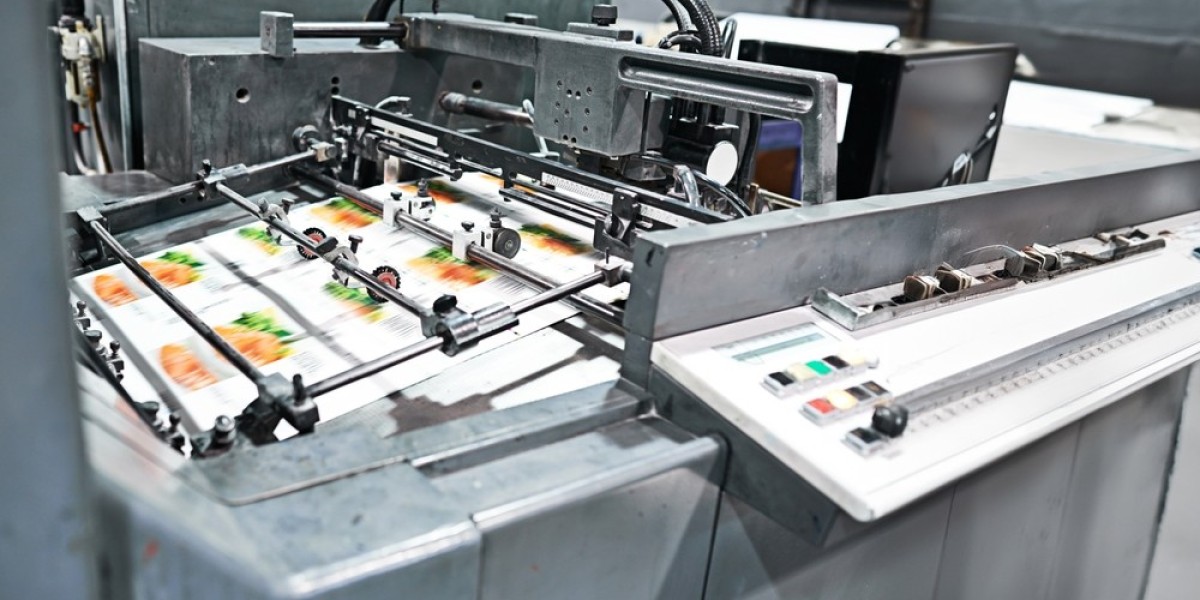In the world of printing, choosing the right method can significantly impact the outcome of your project. Whether you’re a small business owner, a marketer, or an individual looking to create beautiful printed materials, understanding the differences between digital and offset printing services is crucial. Each method has its own strengths and weaknesses, making them suitable for different needs and preferences. In this blog post, we’ll explore the key aspects of digital and offset printing, helping you make an informed decision for your next project.
1. Understanding the Basics of Digital and Offset Printing
What is Digital Printing?
Digital printing is a modern printing method that uses digital files, such as PDFs or images, to produce printed materials. This technique allows for quick and efficient printing without the need for physical plates. Instead, digital printers transfer ink directly onto the chosen substrate, be it paper, plastic, or another material. This process not only streamlines production but also enables on-demand printing, which is particularly beneficial for smaller runs and custom projects.
Moreover, digital printing offers the advantage of versatility. You can easily change designs, colors, or text from one printed piece to the next without incurring significant additional costs. This capability makes digital printing ideal for projects that require personalization or frequent updates, such as marketing materials, invitations, and signage.
What is Offset Printing?
On the other hand, offset printing is a traditional printing method that involves transferring ink from a plate to a rubber blanket and then onto the printing surface. This process requires the creation of printing plates, which can be time-consuming and costly, especially for small quantities. However, once the plates are created, offset printing allows for high-quality, consistent prints in large volumes.
Offset printing is known for its exceptional image quality and color accuracy. It excels in producing intricate designs and vibrant colors, making it a popular choice for high-end projects, such as brochures, catalogs, and packaging. Additionally, this method is often more economical for large print runs, as the cost per unit decreases with volume.
2. Comparing Quality: Digital vs. Offset Printing
Print Quality and Detail
When it comes to print quality, both digital and offset printing have their strengths. Digital printing has made significant advancements in recent years, offering impressive results for a variety of applications. Modern digital printers can achieve sharp images, rich colors, and smooth gradients, making them suitable for most everyday printing needs.
However, offset printing often takes the lead in terms of color accuracy and detail. The use of physical plates allows for precise ink application, resulting in more vibrant colors and finer details. This level of quality is particularly important for projects where visual impact is paramount, such as high-quality brochures, art prints, and professional marketing materials.
Consistency Across Prints
Consistency is another critical factor in comparing printing services. Offset printing generally provides superior consistency across large print runs. Once the printing plates are set, the process can produce thousands of identical copies with minimal variation. This reliability is vital for brands that require uniformity in their printed materials, such as packaging or promotional items.
In contrast, digital printing may experience slight variations between prints due to the nature of the technology. While modern digital printers have improved in consistency, factors like substrate variations and ink density can lead to minor differences. If your project demands absolute uniformity, offset printing might be the better choice.
3. Cost Considerations: Digital vs. Offset Printing
Initial Investment and Setup Costs
When evaluating the cost of printing services, initial investment and setup costs are crucial factors. Digital printing often has lower upfront costs, making it an attractive option for small businesses or individuals with limited budgets. Since there are no plates involved, you can start printing quickly and affordably, especially for smaller quantities.
In contrast, offset printing requires a more substantial initial investment. The cost of creating printing plates can be significant, which makes this method less economical for small print runs. However, if you anticipate a large volume of prints, the initial setup cost can be justified, as the cost per unit decreases significantly with larger quantities.
Cost Per Unit and Volume Pricing
Another vital consideration is the cost per unit. Digital printing typically has a higher cost per unit for large print runs due to the nature of the technology. However, this cost becomes more manageable when printing smaller quantities or customized items. If you need only a few copies of a specific design, digital printing is often the most economical choice.
On the other hand, offset printing becomes increasingly cost-effective as the volume increases. For businesses that require hundreds or thousands of identical prints, offset printing can significantly lower the overall cost per unit. Therefore, if you have a large-scale project in mind, it’s worth considering the offset method to maximize your budget.
4. Speed and Turnaround Times
Quick Turnaround with Digital Printing
When it comes to speed, digital printing services shine. This method allows for rapid printing and quick turnaround times, making it ideal for urgent projects. Since there’s no need for extensive setup or plate creation, you can often have your prints ready within hours or a few days, depending on the complexity of the project.
Additionally, digital printing’s on-demand capabilities enable you to print only what you need, minimizing waste and reducing lead times. For businesses that require quick promotional materials, event signage, or personalized items, the speed of digital printing can be a game-changer.
The Efficiency of Offset Printing
While offset printing typically takes longer due to the setup involved, it can still be efficient for larger runs. Once the plates are created and the press is running, offset printing can produce large quantities of high-quality prints in a relatively short time. This efficiency is particularly beneficial for businesses with ongoing needs for printed materials.
It’s essential to factor in your timeline when choosing between digital and offset printing. If you need materials quickly, digital printing is likely your best option. However, if your project allows for a more extended timeframe and involves a significant volume of prints, offset printing may still be the way to go.
5. Versatility and Application
Digital Printing Applications
Digital printing services offer incredible versatility, making them suitable for various applications. Whether you need marketing materials, business cards, labels, or custom packaging, digital printing can accommodate a wide range of projects. The ability to change designs easily means you can create personalized items tailored to specific audiences or events.
Additionally, digital printing is well-suited for short runs or one-off projects. If you require promotional materials for a special event or a limited-edition product, digital printing allows you to produce small quantities without incurring high costs. This flexibility is a significant advantage for businesses looking to stay agile in a fast-paced market.
Offset Printing Applications
Offset printing, while traditionally associated with larger print runs, still holds its ground in various applications. It is particularly favored for projects requiring high-quality prints, such as magazines, brochures, and packaging. The precision and color fidelity of offset printing make it an excellent choice for brands aiming to make a lasting impression.
Moreover, offset printing works well with a variety of substrates, including specialty papers and cardboard, enabling businesses to explore creative packaging solutions. If your project demands a unique look and feel, offset printing can deliver exceptional results that align with your brand’s vision.
6. Environmental Considerations
Eco-Friendly Digital Printing
As sustainability becomes increasingly important in today’s world, the environmental impact of printing methods is a crucial consideration. Digital printing services often have a smaller carbon footprint compared to offset printing. The ability to print on demand reduces waste, as you only produce what you need. Additionally, many digital printers now use eco-friendly inks and recyclable materials, further minimizing their environmental impact.
Furthermore, digital printing's quick turnaround times can lead to shorter production cycles, reducing energy consumption. For businesses seeking eco-friendly printing solutions, digital printing can be an attractive option that aligns with sustainability goals.
The Environmental Impact of Offset Printing
Offset printing, while often viewed as less environmentally friendly, has also made strides in sustainability. Many offset printers now offer green options, including the use of vegetable-based inks, recycled papers, and eco-friendly production practices. By choosing an offset printing service that prioritizes sustainability, businesses can mitigate their environmental impact.
However, it’s essential to consider the larger print runs typically associated with offset printing. While this method may produce higher volumes, it can also lead to more waste if not managed properly. Therefore, businesses should weigh the benefits and drawbacks of both methods when making their choice.
Conclusion: Making the Right Choice for Your Printing Needs
When it comes to choosing between digital and offset printing services, the decision ultimately depends on your specific needs and circumstances. Digital printing offers speed, versatility, and cost-effectiveness for smaller projects, while offset printing excels in quality, consistency, and larger volumes.
As you navigate your printing options, consider factors such as project size, timeline, budget, and desired quality. By understanding the strengths and limitations of each method, you can make an informed decision that aligns with your goals. Whichever printing service you choose, you’ll be one step closer to creating beautiful, impactful printed materials that resonate with your audience.






